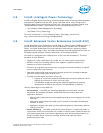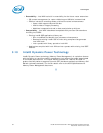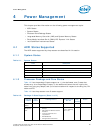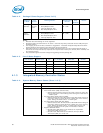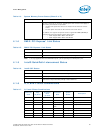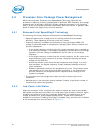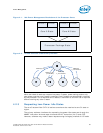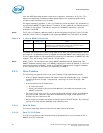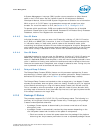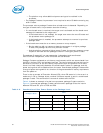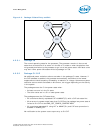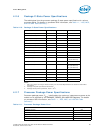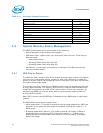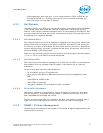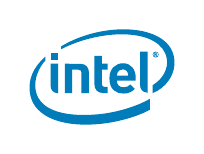
Intel® Xeon® Processor E5-1600 v2/E5-2600 v2 Product Families 91
Datasheet Volume One of Two
Power Management
A System Management Interrupt (SMI) handler returns execution to either Normal
state or the C1/C1E state. See the
Intel® 64 and IA-32 Architecture Software
Developer’s Manual, Volume 3A/3B: System Programmer’s Guide
for more information.
While a core is in C1/C1E state, it processes bus snoops and snoops from other
threads. For more information on C1E, see Section 4.2.5.2, “Package C1/C1E”.
To operate within specification, BIOS must enable the C1E feature for all installed
processors. Please refer to the
Intel® Xeon® Processor E5 v2 Product Family Processor
Datasheet, Volume Two: Registers
for more details.
4.2.4.3 Core C3 State
Individual threads of a core can enter the C3 state by initiating a P_LVL2 I/O read to
the P_BLK or an MWAIT(C3) instruction. A core in C3 state flushes the contents of its
L1 instruction cache, L1 data cache, and L2 cache to the shared L3 cache, while
maintaining its architectural state. All core clocks are stopped at this point. Because the
core’s caches are flushed, the processor does not wake any core that is in the C3 state
when either a snoop is detected or when another core accesses cacheable memory.
4.2.4.4 Core C6 State
Individual threads of a core can enter the C6 state by initiating a P_LVL3 I/O read or an
MWAIT(C6) instruction. Before entering core C6, the core will save its architectural
state to a dedicated SRAM. Once complete, a core will have its voltage reduced to zero
volts. In addition to flushing core caches core architecture state is saved to the uncore.
Once the core state save is completed, core voltage is reduced to zero. During exit, the
core is powered on and its architectural state is restored.
4.2.4.5 Delayed Deep C-States
The Delayed Deep C-states (DDCst) feature on this processor replaces the “C-state
auto-demotion” scheme used in the previous processor generation. Deep C-states are
defined as CC3 through CC6 (refer to Table 4-3 for supported deep c-states).
The Delayed Deep C-states are intended to allow a staged entry into deeper C-states
whereby the processor enters a lighter, short exit-latency C-state (core C1) for a period
of time before committing to a long exit-latency deep C-state (core C3 and core C6).
This is intended to allow the processor to get past the cluster of short-duration idles,
providing each of those with a very fast wake-up time, but to still get the power benefit
of the deep C-states on the longer idles.
4.2.5 Package C-States
The processor supports C0, C1/C1E, C2, C3, and C6 power states. The following is a
summary of the general rules for package C-state entry. These apply to all package
C-states unless specified otherwise:
• A package C-state request is determined by the lowest numerical core C-state
amongst all cores.
• A package C-state is automatically resolved by the processor depending on the
core idle power states and the status of the platform components.
— Each core can be at a lower idle power state than the package if the platform
does not grant the processor permission to enter a requested package C-state.



